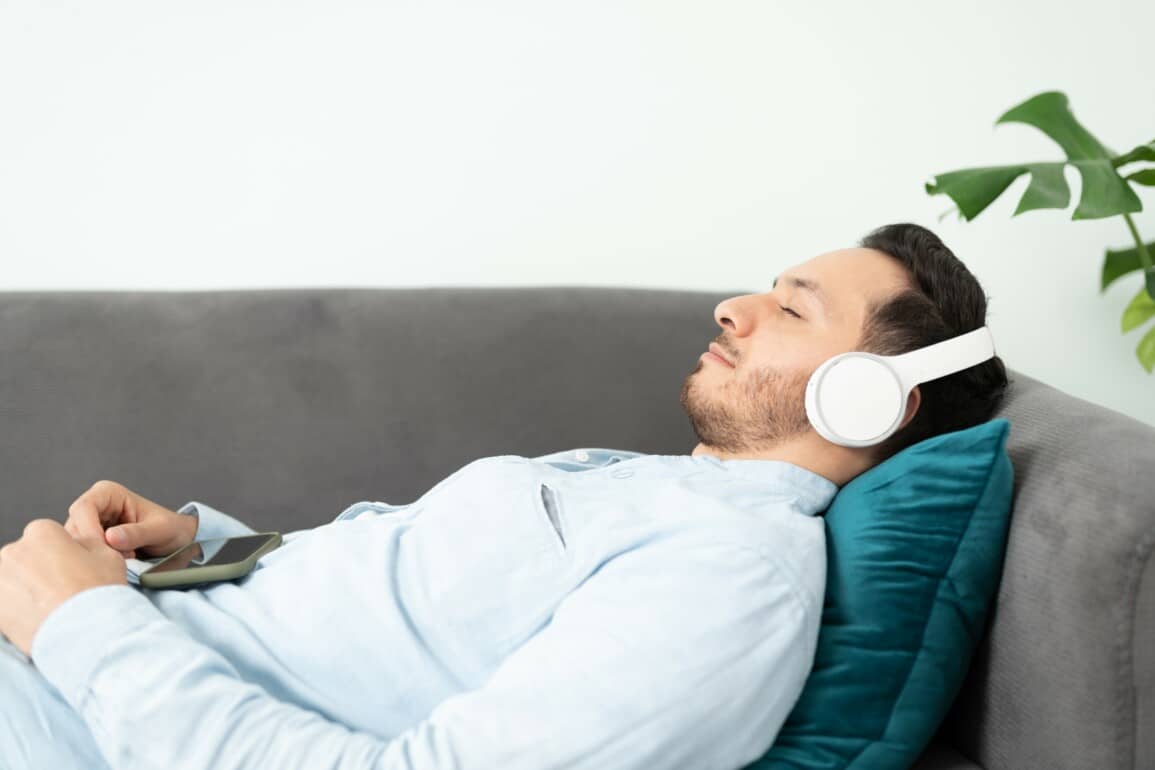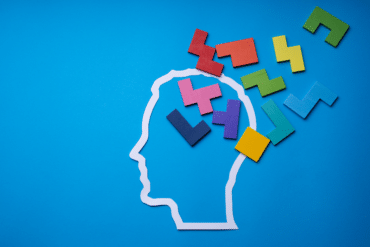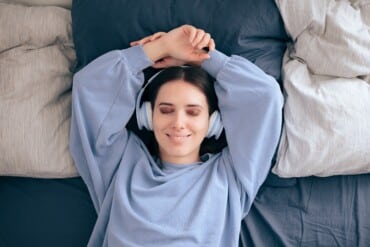Why not try NSDR if you’re looking for methods to be more productive and alert? A method to keep you on top all day on spite of a poor night’s sleep. In today’s post we’ll define NSDR and help you get started on this great practice.
What is NSDR, and how can it help you handle the challenges of sleep deprivation and sleep debt? These are questions worth asking if you’re one of the many people around the world who struggle to get a consistently good night’s rest.
According to the CDC, approximately 1 in 3 adults don’t get enough sleep. These individuals aren’t necessarily suffering from insomnia or any sleep-related conditions. People can suffer from sleep deprivation as a result of stress, chaotic schedules, and endless distractions.
Unfortunately, when you don’t get enough sleep, your body can’t function normally. You need sleep to concentrate, manage your emotions, and even keep your organs working properly. The more sleep you lose, the more risk you face when it come to various mental and physical health conditions.
There are various ways you can try to improve your sleep pattern, from practicing sleep hygiene, to meditating, and getting regular exercise. However, for people who struggle to get the right number of hours into their sleep schedule each evening, there’s also an alternative.
NSDR, or non-sleep deep rest could be a powerful tool for those who regularly suffer from sleep deprivation. Here’s everything you need to know about NSDR and the NSDR protocol.
What is non-sleep deep rest? The NSDR protocol
So, what is NSDR? Non-sleep deep rest is a health practice intended to support people who regularly don’t get enough sleep. The term was originally coined by a neuroscientist at Stanford University, named Dr. Andrew Huberman.
Dr. Huberman created the NSDR protocol after years of research into the world of sleep. Notably, he chose the name to make the concept more appealing to people who don’t like the idea of meditation or yoga.
According to Huberman, NSDR involves achieving a self-directed sense of calm and relaxation. It requires people to focus on a specific bodily practice which is usually autonomous, such as breathing. Alternatively, people can also use strategies like “visualization” to assist with their rest.
NSDR is something of a catch-all term, which encompasses a wide range of practices intended to boost relaxation, mood, and focus. It can include a practice known as “yoga nidra”, as well as hypnosis, and guided meditation. Huberman says this strategy has been proven to enhance the rate and depth of learning, as it can “recharge the brain”.
For people suffering from sleep deprivation, NSDR can also be a way to catch up on some sleep debt. It involves actively taking measures to slow down brain wave frequency, to achieve a state similar to sleeping, while you’re still awake. This is a powerful way to relax and refresh your mind quickly, and deeply. Plus, it can be done at any time, in any place.

Is NSDR same as yoga nidra?
The term “NSDR” is often used interchangeably with “yoga nidra”. However, they’re not exactly the same thing. NSDR is a comprehensive protocol which involves using multiple methods to achieve a state of relaxation, followed by intense focus. One of the methods commonly used in NSDR is “yoga nidra”, otherwise known as yogic sleep.
Yoga nidra is a form of guided meditation intended to induce a state somewhere between wakefulness and sleep called “hypnagogia”. Essentially, it’s an intense state of consciously directed relaxation. The concept of yoga nidra dates back to ancient times. However, modern science has begun to explore the benefits of this solution to treat various diseases.
Studies have shown yoga nidra to be a beneficial way to address various conditions, including chronic insomnia. Similar to NSDR, practicing yoga nidra involves finding a quiet and distraction-free place where you can comfortably focus on relaxation.
There are special tracks and guided meditation tools available to help guide your awareness to different parts of your body, until you get to an almost sleep-like state.
Does NSDR help with sleep?
NSDR might seem like a complicated concept at first, but it’s actually relatively straightforward. The strategy works by slowing down the brainwaves, mimicking the experience of your brain and body during slow-wave sleep.
Slow-wave sleep, also known as deep sleep, is one of the four key stages of sleep required by the body during the resting process. In slow-wave sleep, the brain produces delta waves, shown on EEG devices. During this period, the body also begins to rejuvenate and heal itself.
Studies have shown that a greater percentage of certain growth hormones are released during slow-wave sleep, which are responsible for enhancing mental capacity, and promoting tissue repair.
Slow-wave sleep is also important because it activates the parasympathetic nervous system, reducing the fight-or-flight response, and minimizing stress. When your parasympathetic nervous system is activated, this also helps to decrease your respiratory and heart rate to their ideal baseline. In many instances, this leads to better cardiovascular health.
Scientists believe NSDR can promote changes and experiences in the body similar to slow-wave sleep. During NSDR, the brain waves begin to shift from beta frequency to alpha frequency, and then into the deep meditative state of theta frequency.
If NSDR is done correctly, it can also lead to delta frequency, which happens most commonly during slow-wave sleep.
The overall aim of NSDR is to deliver the same benefits of deep, slow-wave sleep, without requiring you to actually fall asleep. In some cases, NSDR can even help to improve the general quality of sleep accessed by most people, and assist in relaxation and stress management.

What is an NSDR protocol good for?
At present, the research available into NSDR is somewhat limited. However, neuroscientists are working to learn more about how we can control the waves of the brain while conscious, to unlock a range of benefits.
In his podcast and YouTube channel, Dr. Huberman shares a number of insights into the benefits of NSDR for promoting various physiological processes.
Huberman notes that NSDR can help with:
- Improving sleep quality
- Enhancing memory retention
- Boosting neuroplasticity and promoting learning
- Improving cognitive function
- Relieving stress and anxiety
- Managing pain and discomfort
- Increasing mental clarity and focus
Since there are no medications or chemicals involved in NSDR, it’s also relatively safe for just about anyone to try out. All you need is a little patience, and a quiet space to get started.
How is NSDR done?
Dr. Huberman notes there are two ways to achieve NSDR, which are called “NSDR protocols”. The techniques most individuals use involve a combination of yoga nidra, and hypnosis.
In hypnosis, users leverage guided meditation tapes and other tools to enter a trance-like state, for deep relaxation and enhanced focus. During hypnosis, people are encouraged to detach completely from their existing environment, and focus on their inner experience.
Yoga nidra is another form of guided meditation, which uses sound, music, and instruction to guide individuals through the process of progressively relaxing their muscles, and entering a trance-like state. However, hypnosis and yoga nidra do differ in some areas.
In hypnosis, there’s a focus on the suppression of consciousness, which means some people may not remember what happened during their sleep experience.
The process of hypnosis is also typically guided by a professional therapist, using speech and visualization techniques.
Alternatively, yoga nidra can be performed at home with the assistance of a tape or specific playlist. Interestingly, some experts believe practicing yoga nidra can be a good way to activate the release of the sleep hormone, melatonin.
A study found that while both yoga nidra and meditation are both effective at reducing stress and anxiety, yoga nidra is particularly effective at minimizing anxiety.
Should you try NSDR?
NSDR is a safe and natural way to refresh your mind and body when you’re suffering from a lack of sleep. This strategy shouldn’t necessarily replace the quest for a good night’s rest. It’s still important to practice good sleep hygiene and find ways of improving sleep quality.
However, in today’s busy world, it is common for many people to encounter periods when they’re unable to achieve the level of sleep they need.
NSDR can be an excellent way to achieve the benefits of deep-sleep when going to sleep isn’t an option. Although it may take a little practice before you’re comfortable performing NSDR protocols yourself, they can have a lot of benefits.
If you’re not sure about how to get started with NSDR, you could consider talking to a professional in the holistic health landscape, or asking a yoga instructor how to get started with yoga nidra. It’s also worth checking out the podcasts and guidance offered by Dr. Huberman himself.
Siestio. Sleep Matters.
You might like these posts too:
—Yoga to improve sleep
—Have a Spanish siesta
—Stretches for sleeping
General advice disclaimer
This article contains general tips and advice. However, no diet or exercise program should be started without consulting your physician or other industry professional first. For more information read our full disclaimer here.







